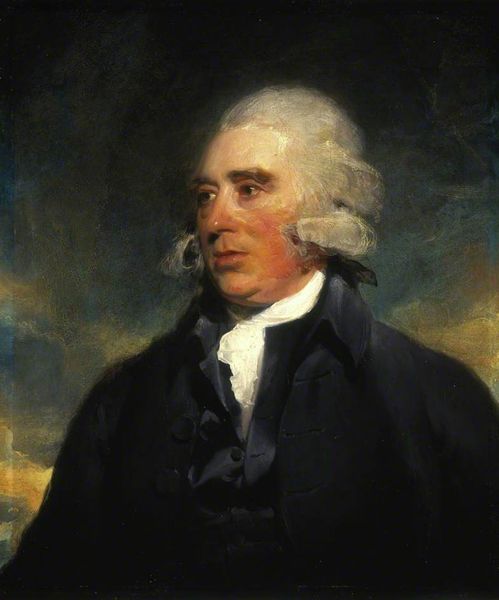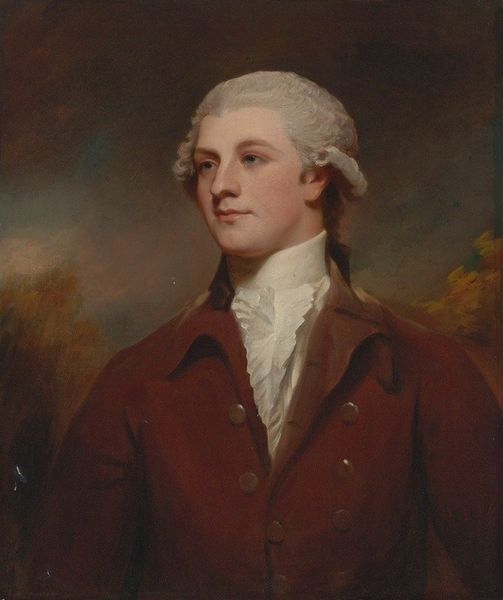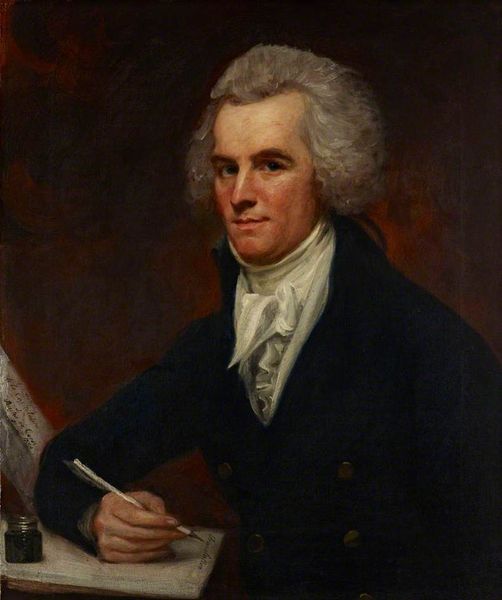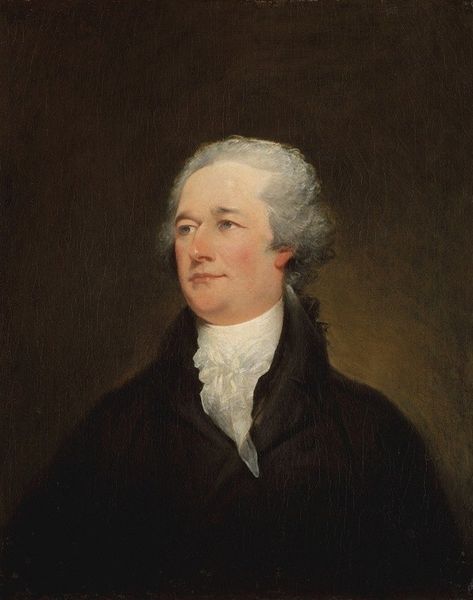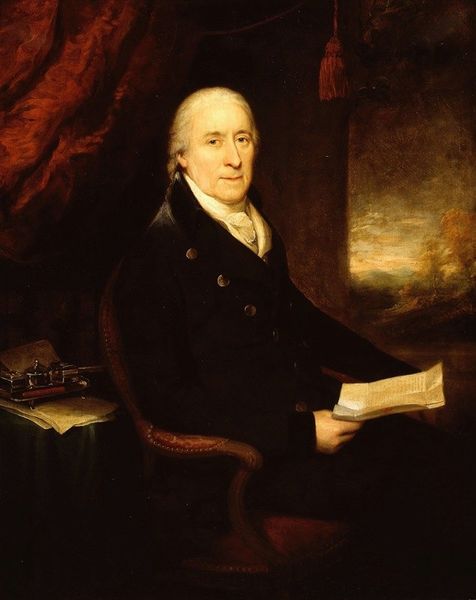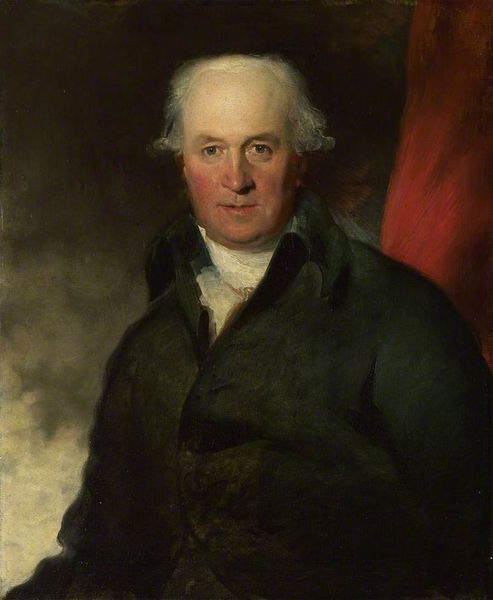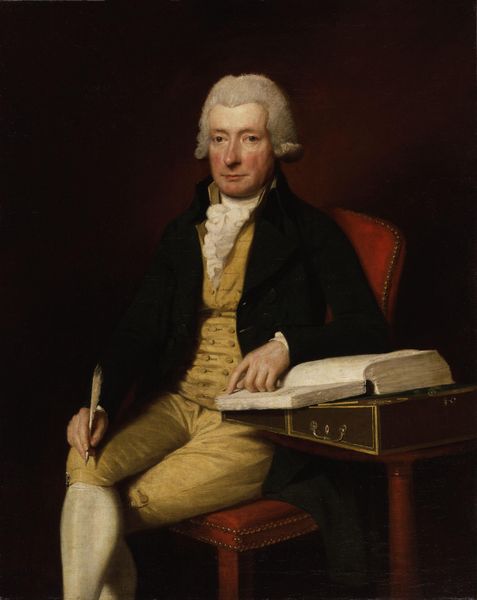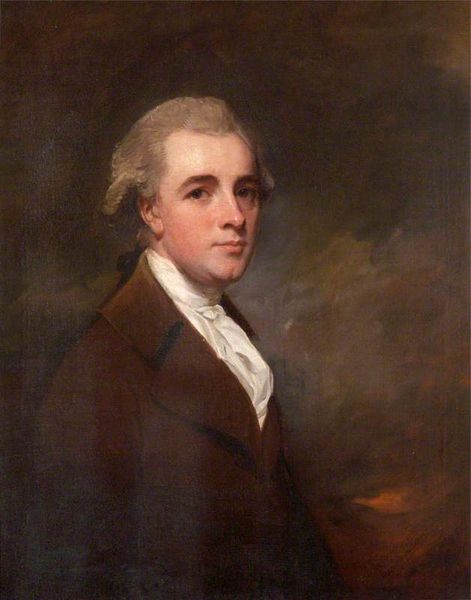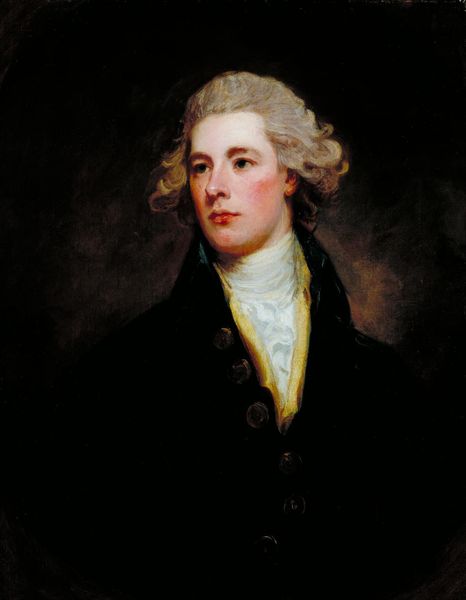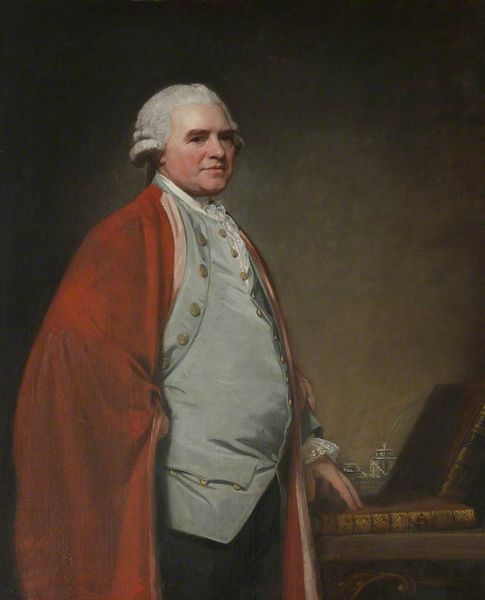
painting, oil-paint
#
portrait
#
portrait
#
painting
#
oil-paint
#
romanticism
#
portrait drawing
#
academic-art
Copyright: Public domain
Editor: Here we have Thomas Lawrence’s "George Granville Leveson-Gower", dating back to 1800, rendered in oil paint. What immediately grabs me is the stark contrast between the sitter's pale complexion and the dark, almost brooding background. What do you see in this piece? Curator: Well, you've hit on something vital already. Beyond the obvious elegance of a portrait intended to convey status, for me, the contrast is key, acting almost as a stage. It is where a very self-aware character presents a version of himself to the world. And the year this was painted, 1800, stands on the cusp of great social upheaval. What isn't spoken is often more important, and it hides within the shadows. The texture of his collar and hair speak of the delicate yet potentially transient nature of identity. What feelings does the portrait conjure for you? Editor: I think there is a quiet stillness, as if capturing a fleeting thought. Almost melancholic but restrained. What do you mean by social upheaval? Curator: It's painted on the brink of huge shifts. This man likely holds privilege and title that the coming century will put under tremendous pressure, with the rise of new philosophies. Look at his slightly averted gaze; it’s not defiance, but maybe an acknowledgement that things cannot remain as they were. It also seems like the composition, for all it's finery, has something incomplete in its nature. Something unfinished to represent that very transformation of an era, an expectation of things to come perhaps? Editor: So, the artist captured more than just a likeness, it's a historical snapshot of a moment on the verge of change. The subtle tension in his face is remarkable considering that. Curator: Absolutely! It's a visual poem of a society on the cusp, and isn't it fascinating how a painted gaze can whisper such stories across centuries? A wonderful conversation, really.
Comments
No comments
Be the first to comment and join the conversation on the ultimate creative platform.
